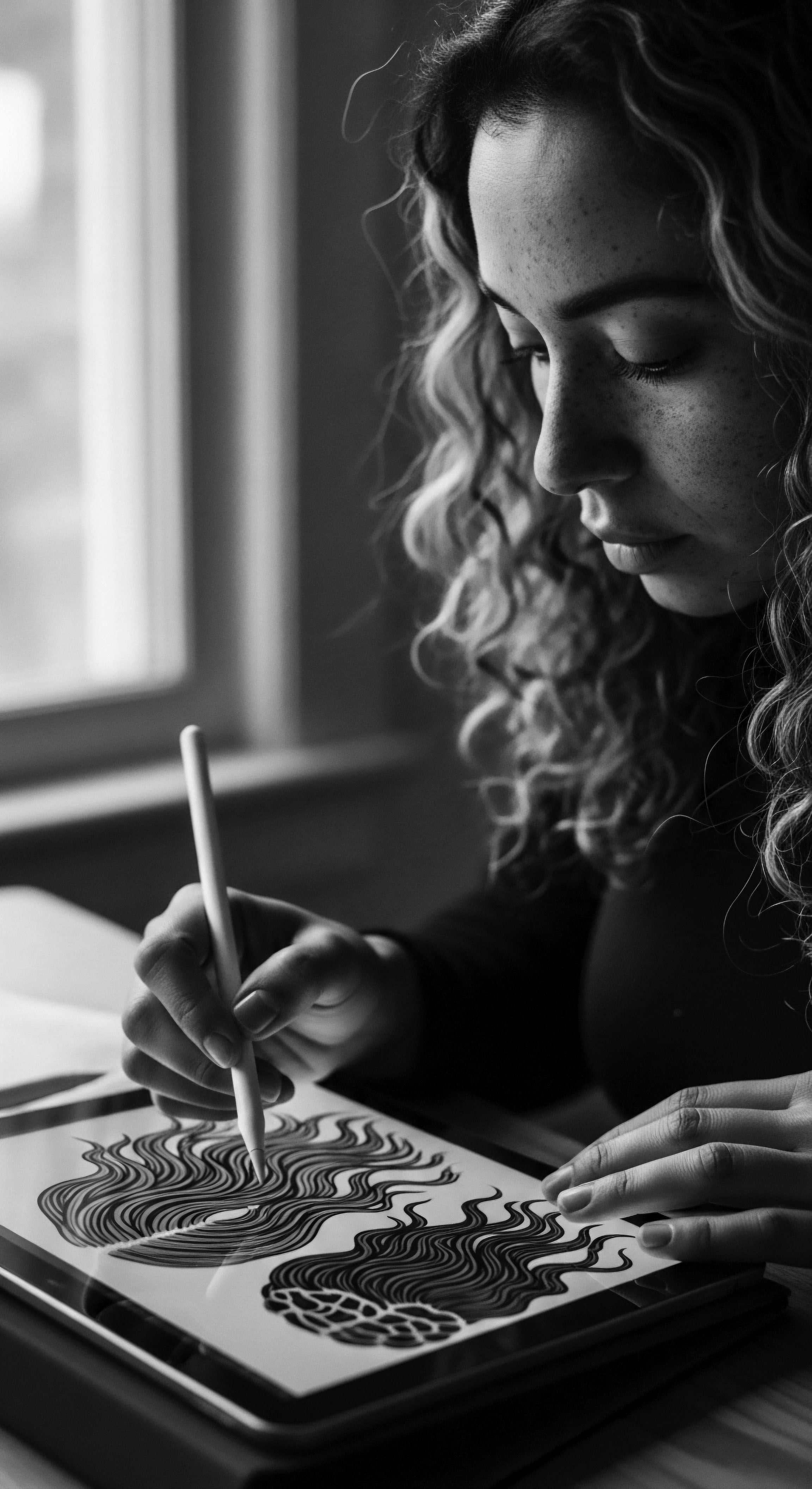
Roots
The very strands that crown our heads, particularly those with texture, hold within them a profound inheritance, a living testament to generations past. Each coil, every wave, carries whispers of ancient landscapes, the resilience of spirits, and the deep wisdom of those who walked before us. When we consider whether traditional African remedies can strengthen textured hair against the relentless siege of environmental elements, we are not merely asking about botanical chemistry.
Instead, we embark upon a journey back through the mists of time, seeking to understand the deep, interconnected lineage between our hair’s elemental biology and the ancestral practices forged in the crucible of African environments. Our textured hair, often perceived through a narrow, modern lens, is in truth a vibrant, historical record, bearing the marks of sun, wind, dust, and rain, and the ingenious ways our forebears learned to safeguard its vitality.
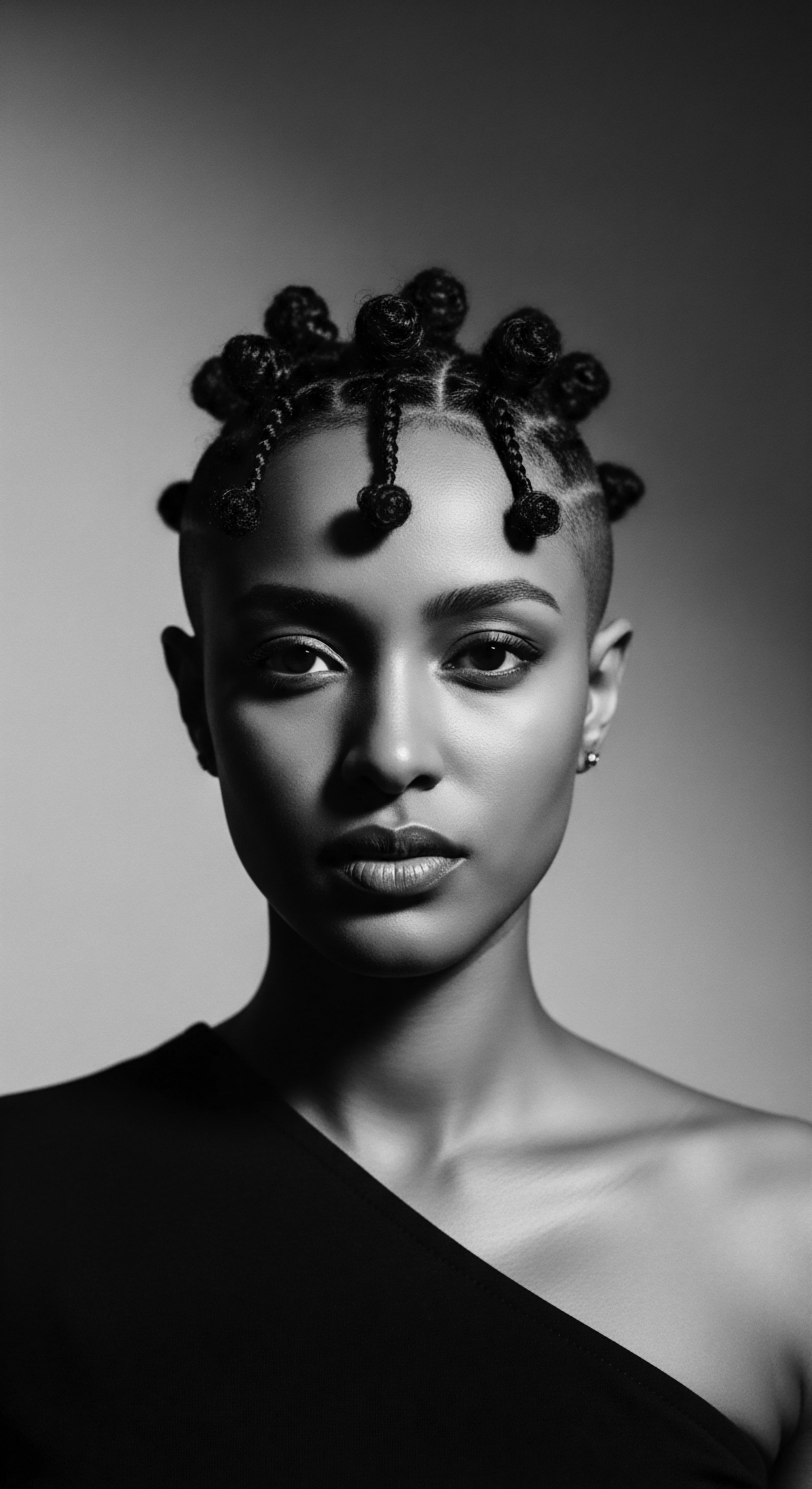
Hair Anatomy and Its Ancestral Echoes
The unique architecture of textured hair—its elliptical cross-section, the varied curl patterns, the often-open cuticle layers—renders it distinct from other hair types. This structural makeup, while lending itself to incredible volume and diverse styling, also means a natural predisposition to dryness and vulnerability when faced with harsh external forces. Ancestral communities, without microscopes or biochemical assays, possessed an intuitive grasp of this innate fragility and resilience. They understood that the hair, like the skin, needed constant replenishment and protection.
This understanding was not gleaned from textbooks; it was observed, felt, and passed down through the ages. The very helical twist of a coiled strand, for instance, means more points of contact for environmental particles to adhere to, and potentially more friction points, making thoughtful care a generational imperative.
Textured hair, with its unique structure, stands as a living archive of ancestral adaptations and care wisdom against environmental challenges.

Naming Our Strands ❉ Beyond Western Classifications
While modern systems attempt to categorize textured hair into numerical and alphabetical typologies, the traditional African understanding of hair was far richer, rooted in cultural identity and communal purpose rather than a rigid, universal chart. Hair was not simply “Type 4C”; it was a marker of age, marital status, tribal affiliation, spiritual belief, and social standing. The very act of hair styling and care became a language, a form of non-verbal communication within a community. For instance, among many West African groups, hair patterns could denote a person’s readiness for marriage or their role in society.
The language used to describe hair in these contexts was often poetic, imbued with reverence for its significance beyond mere aesthetics. This cultural classification, though unwritten, implicitly guided how hair was cared for, recognizing its central role in individual and collective well-being.
- Irun ❉ A Yoruba term that encompasses the entire concept of hair, often extending to its spiritual and aesthetic significance.
- Ntsa ❉ In Ghana, among the Akan people, this term refers to hair that is thick and plentiful, a sign of vitality and beauty.
- Tignon ❉ While a historical term from colonial Louisiana, it represents the elaborate headwraps often used to protect and adorn textured hair, a practice with direct ancestral ties to African head coverings.
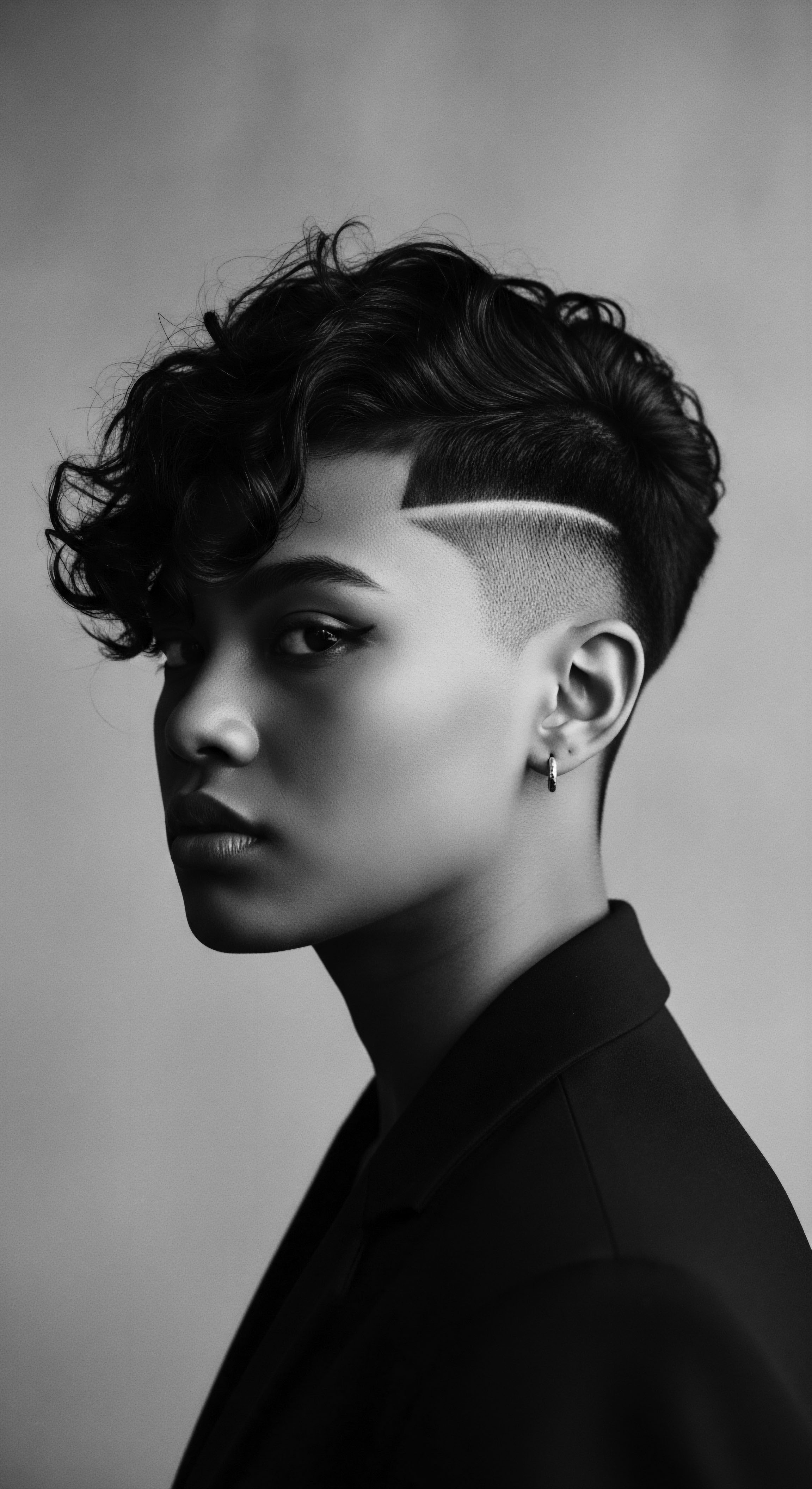
The Rhythms of Growth and Environmental Influences
Hair grows, rests, and sheds in cycles, a process universally shared yet uniquely impacted by external conditions. In traditional African societies, where life was intimately tied to the rhythms of nature, the environmental stressors were palpable. The searing sun, desiccating winds carrying dust, periods of drought, or intense humidity cycles—all placed demands on hair’s integrity. These communities observed how such conditions led to dryness, brittleness, or breakage.
Their remedies, therefore, were often attuned to these rhythms, employing seasonally available ingredients that offered moisture, lubrication, and protective barriers. The ancestral understanding of hair health was inherently holistic, recognizing that environmental factors intertwined with nutrition, spiritual well-being, and communal support to define hair’s strength and appearance.
| Aspect of Hair Hair Structure |
| Ancestral Understanding / Remedy Acknowledged varied textures, often linked to lineage or region; manipulated for protective styles (e.g. braids, twists). |
| Modern Scientific Correlation Recognizes elliptical follicle shape, unique curl patterns, and cuticle lifting, impacting moisture retention. |
| Aspect of Hair Environmental Impact |
| Ancestral Understanding / Remedy Observed sun, wind, dust causing dryness and breakage; applied oils and butters for protection. |
| Modern Scientific Correlation UV radiation damages keratin, free radicals impair structure; emollients provide a barrier and seal moisture. |
| Aspect of Hair Hair Health Signals |
| Ancestral Understanding / Remedy Luster, softness, and length as signs of vitality; remedies aimed at maintaining these qualities. |
| Modern Scientific Correlation Healthy hair cuticle lay flat, reflects light; elasticity indicates proper hydration and protein balance. |
| Aspect of Hair Scalp Health |
| Ancestral Understanding / Remedy Understood the scalp as the foundation; used plant extracts to soothe irritation or stimulate growth. |
| Modern Scientific Correlation Recognizes the scalp microbiome, sebum production, and follicular health as critical for hair growth and condition. |
| Aspect of Hair This table reflects a deep, intuitive ancestral knowledge often validated by contemporary scientific inquiry into textured hair's heritage. |
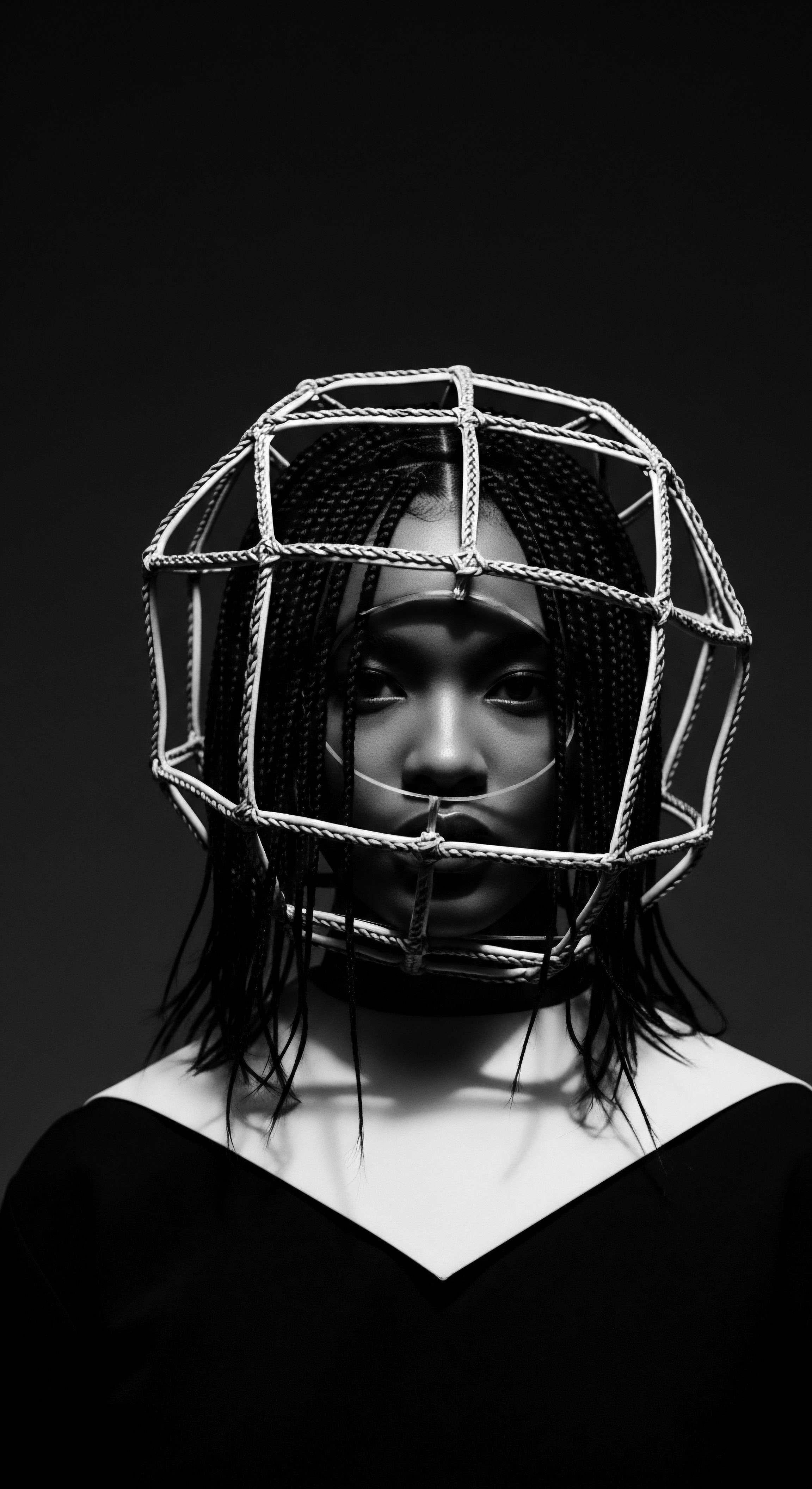
Ritual
From the foundational understanding of our hair’s very being, we journey into the realm of ritual, where hands become instruments of care and intention. For generations, the art of styling textured hair in Africa was far more than mere ornamentation; it was a sophisticated practice deeply interwoven with identity, spirituality, and communal life. Each braid, every twist, and every careful application of a remedy was a deliberate act of protection against the elements, a living ritual passed from elder to youth. These methods, born from necessity and refined over centuries, demonstrate a profound connection to the earth’s bounty and an intuitive grasp of what textured hair truly needs to thrive amidst environmental pressures.
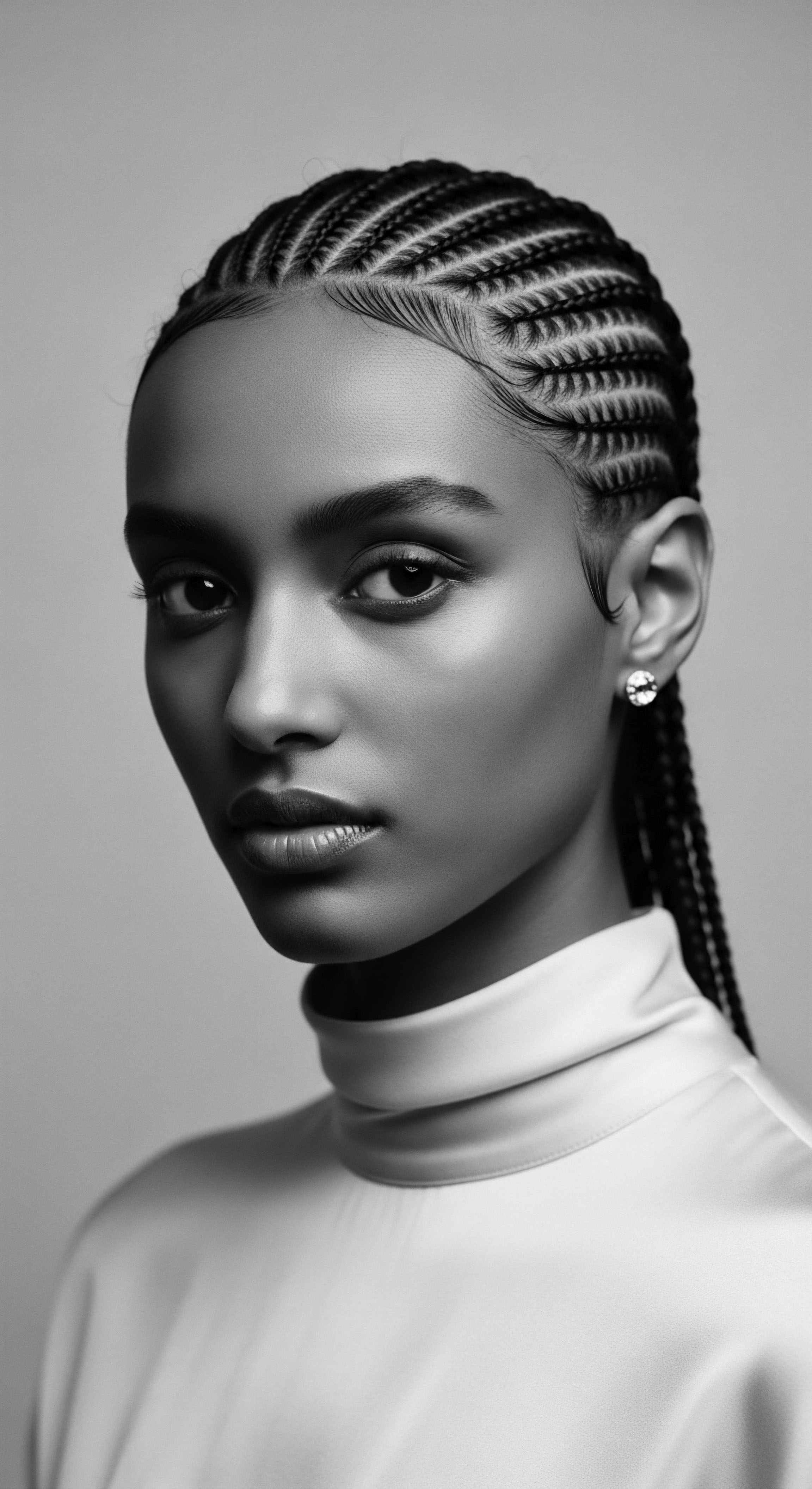
Protective Hairstyles for Environmental Resilience
The array of protective styles found throughout the African continent stands as a testament to the ingenuity of ancestral practices. Braids, twists, and locs were not simply aesthetic choices; they were strategic defenses against the relentless sun, abrasive winds, and particulate matter prevalent in many environments. By gathering the hair into these intricate patterns, exposure of the delicate strands and scalp was significantly reduced. Consider the Fulani braids, often adorned with cowrie shells and beads, which offered not only cultural signification but also a compact, contained structure that shielded the hair from entanglement and desiccation during long treks or daily chores in arid regions.
This practical application of styling served a dual purpose ❉ preserving the hair’s moisture and reducing physical damage that could lead to breakage. Blain (2013) highlights how hair became an architectural marvel in many African societies, designed both for beauty and the arduous demands of daily life.

How Did Ancestral Protective Styles Defy the Elements?
The protective capacity of these styles lies in their ability to minimize external stress. When hair is left loose, each individual strand is vulnerable to friction, tangling, and direct exposure to environmental aggressors like UV radiation. Protective styles mitigate this by:
- Reducing Surface Area ❉ Bundling hair into braids or twists significantly lessens the amount of hair directly exposed to sun and wind, thus minimizing moisture loss.
- Minimizing Friction ❉ Loose hair can rub against clothing, surfaces, and itself, causing cuticle damage. Styles that coil or braid hair neatly prevent this constant abrasion.
- Containing Moisture ❉ When combined with traditional remedies, protective styles help seal in moisture and botanical benefits for longer periods.

Defining Our Curls with Earth’s Bounty
Beyond protective styles, ancestral communities devised methods to enhance and define the natural curl patterns, often through the strategic use of plant-based ingredients. For instance, certain clays or plant mucilages were used to clump curls, providing definition while also imparting beneficial minerals and moisture. The careful application of specific plant extracts, perhaps from the aloe vera plant common across parts of Africa, would lend a soft hold and sheen, helping the curls maintain their structure and therefore their protective integrity against environmental elements. These techniques were not about altering the hair’s fundamental nature, but rather about working with its inherent qualities to enhance its natural beauty and resilience.

Historical Hair Adornments for Practical Protection
The use of wigs and extensions in traditional African societies dates back millennia, as evidenced by ancient Egyptian funerary artifacts. These were sometimes functional extensions of protective styling, adding bulk and density to hair that could then be styled into formidable protective forms. The elaborate wigs of ancient Egypt, crafted from human hair, plant fibers, or wool, were not merely symbols of status; they offered a layer of defense against the harsh desert sun and sand.
Similarly, hair adornments like beads, cowrie shells, and metal rings, while aesthetically pleasing, could also serve to weigh down and contain hair, preventing it from tangling or breaking in windy conditions. Patton (2006) discusses how such adornments could also signal specific communal roles, each requiring careful attention to hair, often involving protective practices.
| Tool / Adornment Wooden Combs (e.g. Igbo, Yoruba) |
| Cultural Origin (Example) West Africa |
| Protective Function / Heritage Link Crafted to gently detangle dense textures, minimizing breakage during styling, preserving length. Often carved with symbols, indicating cultural significance beyond mere utility. |
| Tool / Adornment Hairpins / Bone Needles |
| Cultural Origin (Example) Various African Cultures |
| Protective Function / Heritage Link Used for intricate sectioning and securing complex styles, ensuring longevity and maintaining hair's enclosed, protected state. Some were imbued with spiritual meaning. |
| Tool / Adornment Shea Butter / Clay Pots |
| Cultural Origin (Example) West / North Africa |
| Protective Function / Heritage Link Containers for precious hair remedies; the materials themselves might have influenced storage and preservation of ingredients, enabling consistent application for protection. |
| Tool / Adornment Beads / Cowrie Shells |
| Cultural Origin (Example) Pan-African |
| Protective Function / Heritage Link Adorned braids and locs, adding weight and securing the style, which reduced movement and exposure to external elements. Also represented wealth, status, or spiritual connection. |
| Tool / Adornment These traditional tools and adornments speak to a heritage where hair care was an art, a science, and an act of profound cultural significance, rooted in protection. |

Relay
The continuous flow of ancestral wisdom into contemporary practice forms the third pillar of our exploration ❉ the relay. This section delves into the ongoing regimens, nighttime rituals, and problem-solving strategies that have been refined across generations, all contributing to the resilience of textured hair. Here, the ancestral knowledge of remedies comes into sharp focus, demonstrating how deep engagement with the earth’s natural gifts provides tangible benefits against the constant barrage of environmental stressors. The wisdom of our ancestors, preserved and adapted, continues to provide a blueprint for vibrant hair health.

Crafting Personalized Regimens from Ancient Blueprints
The concept of a structured hair regimen, while seemingly modern, has roots in ancestral practices that were deeply attuned to the cycles of nature and the needs of the body. Rather than rigid schedules, traditional communities developed intuitive patterns of care, often dictated by seasonal availability of ingredients, communal events, or the specific demands of daily life. For instance, during dry seasons, moisturizing and sealing practices might have been more frequent. These regimens were highly personalized, born from observation and passed down orally.
A young woman might learn from her elder which specific blend of oils or herbs suited her particular hair density or curl pattern. This personalized approach, grounded in observation and tradition, laid the groundwork for effective and responsive hair care that addressed environmental challenges directly.

What Traditional African Ingredients Offered Hair Resilience?
A treasury of botanicals and minerals from the African continent has long served as the bedrock of traditional hair remedies. These ingredients, revered for their natural properties, offered defense against the elements:
- Shea Butter (Butyrospermum Parkii) ❉ Sourced from the nuts of the African shea tree, this rich butter has been used for centuries as a moisturizer and sealant. Its fatty acid composition forms a protective barrier on the hair shaft, shielding it from wind, sun, and dehydration. It also helps to smooth the cuticle, reducing protein loss and improving elasticity, crucial for preventing breakage in harsh climates. Okoro (2019) details the ethnobotanical importance of shea butter, citing its historical use for both skin and hair protection across West Africa.
- Chebe Powder (Croton Zambesicus) ❉ Predominantly used by the Basara women of Chad, Chebe powder is a mixture of ground seeds, resin, and other botanicals. When applied as a paste, it coats the hair, providing remarkable lubrication and strengthening properties. This coating helps retain moisture and reduces friction, which is vital for preventing breakage in long, fine strands that are prone to tangling and environmental damage. The women traditionally apply it, braid their hair, and reapply periodically, allowing the paste to build up over time, forming a shield against environmental stressors.
- Baobab Oil (Adansonia Digitata) ❉ Extracted from the seeds of the iconic baobab tree, this oil is a powerhouse of omega fatty acids. It absorbs easily, providing deep nourishment without weighing hair down. Its emollient properties help to soften strands and improve elasticity, making hair less susceptible to breakage from dryness caused by sun exposure or low humidity. The baobab tree itself is a symbol of endurance and life in arid environments, a fitting emblem for an oil that imbues hair with similar resilience.
- Bentonite Clay ❉ Found in various regions, including parts of North Africa, this volcanic ash-derived clay was used for its detoxifying and conditioning properties. When mixed with water, it creates a paste that can cleanse the scalp and hair while also providing minerals. Its unique molecular structure absorbs toxins and can even soften and define curls, making hair more manageable and less prone to environmental damage. Its use suggests an understanding of the need to gently cleanse without stripping hair of its natural oils, maintaining its protective lipid barrier.
Ancestral remedies, often rooted in readily available botanicals, provided layered protection against environmental stressors by moisturizing, sealing, and strengthening textured hair.

The Nighttime Sanctuary ❉ A Heritage of Protection
The practice of covering one’s hair at night is a deeply ingrained aspect of textured hair care, with historical precedence across African cultures. This ritual, often involving intricately wrapped cloths or simpler coverings, served a crucial purpose ❉ protecting hair from friction against bedding materials, which could lead to dryness, frizz, and breakage. Beyond the practical, these coverings often carried cultural significance, becoming symbols of modesty, beauty, or spiritual connection.
The wisdom of creating a “nighttime sanctuary” for hair speaks to a holistic understanding of hair health—that care is a continuous process, extending beyond daylight hours and active styling. This tradition, passed down through generations, effectively mitigates common environmental stressors encountered even indoors.

Addressing Hair Challenges with Ancient Wisdom
Just as modern science offers solutions for hair woes, ancestral practices presented effective remedies for common textured hair problems, often rooted in the same principles of moisture retention, strengthening, and gentle cleansing. For example, issues of chronic dryness, a persistent problem in arid climates, were addressed through consistent application of unrefined butters and oils, like shea butter or palm oil, which formed occlusive barriers. Breakage, particularly at the ends, was countered by coating methods (like Chebe) that reduced friction and strengthened the hair shaft.
Scalp irritation or flakiness was treated with soothing plant infusions or clays known for their anti-inflammatory properties. The efficacy of these traditional remedies, often derived from a deep understanding of local flora and fauna, lies in their alignment with the fundamental needs of textured hair ❉ moisture, protection, and gentle handling.

Reflection
Our journey through the ancestral echoes of textured hair care reveals a story far richer than any single product or trend could ever tell. It is a story of enduring wisdom, a profound communion with the earth, and an unwavering commitment to the vitality of our strands. The question of whether traditional African remedies can strengthen textured hair against environmental stressors finds its answer not merely in scientific validation, though that often confirms what our ancestors knew instinctively.
Instead, it lies in the legacy itself—a continuous relay of knowledge, care, and cultural meaning passed through countless hands. The very existence of these practices, refined over millennia in diverse and challenging environments, speaks volumes to their efficacy.
Roothea’s ‘Soul of a Strand’ ethos reminds us that textured hair is not simply protein fibers; it is a living, breathing archive, holding within its helix the resilience, beauty, and ingenuity of our forebears. By understanding and honoring the heritage of traditional African remedies, we do more than just fortify our hair against the external world. We strengthen our connection to a lineage of wisdom, allowing the enduring spirit of ancestral care to guide our hands and nourish our roots. In this act, we do not just tend to our physical selves; we participate in a powerful affirmation of identity, allowing the unbound helix of our heritage to reach forward, strong and vibrant, into the future.

References
- Blain, J. (2013). African Hair ❉ Culture, Politics, and Aesthetics. Durham ❉ Duke University Press.
- Okoro, E. (2019). Ethnobotany of African Hair Care ❉ Traditional Practices and Medicinal Plants. London ❉ Routledge.
- Patton, J. (2006). African American Hair Story ❉ Cultural and Historical Explorations. Gainesville ❉ University Press of Florida.
- Nwadike, C. (2018). The Science of Black Hair ❉ A Comprehensive Guide to Textured Hair Care. New York ❉ Black Hair Media.
- Diala, N. (2021). Indigenous Knowledge Systems and Traditional African Hair Practices. Lagos ❉ University of Lagos Press.
